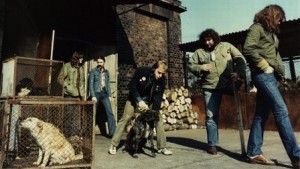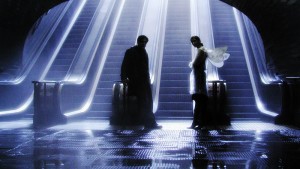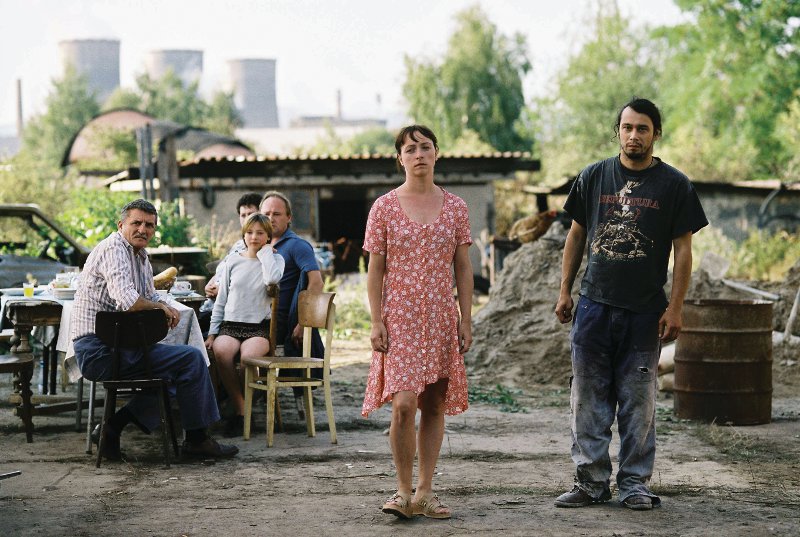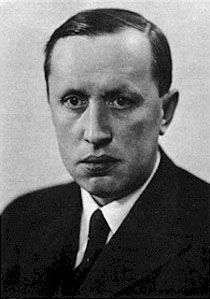Thanks to its relatively close relation with the Western world, Hungary much more than other countries of the Eastern Bloc was under very strong influence of the Western popular culture. It was visible especially at the field of the rock music. In the first part of my essay I will attempt to analyze motives of the popular culture as seen in the 1981 movie “Bald-Dog-Rock” (“Kopaszkutya”). Second part of my essay will be expended to analysis elements of the popular culture in 2003 movie „Kontroll”, but this time I will attempt to look at it from a different angle.

In the Western world the rock music accompanied great social and moral transformation of the 60’s and 70’s. For the first time in history young people gained their own voice and it was heard loudly. The rock culture was a platform for protests, especially against the Vietnam War. The invention of the contraception pill changed sexual behavior of the youngster and the freedom on that field was only limited by emergence of the AIDS disease in 1980’s. Late 60’s and 70’s is often called golden era of rock and popularity of the music from this period confirm it fully: for example The Beatles sold more records than any other band in 20091, despite that the band was dissolved about 30 years earlier. The decade of 1970’s was the period of important changes in the rock culture. Not only the music evolved and simple songs gave place to more sophisticated works, but also the surrounding culture changed dramatically. There was no longer dress code or „accepted behavior” – from now on, everything could be worn, said or done on the stage2.
But that was not the case of the rock band portaited in „Bald Dog Rock”. Living in communist Hungary they had limited ways of expression. They can observe how great bands of the 70s, Omega and Locomotiv GT, enjoyed world wide recognition (in 1970’s they toured not only in the Soviet Bloc, England, West Germany, France, Spain, United States etc.)3 but for the bands from lower shelves life was much more tough. To reach break-through point they not only had to spend a significant amount of money on equipment, but also to get past the corrupted officials from state-controlled musical industry4. Using rock music as a tube for the protest movements of the youths was also out of question under conditions where rock scene was under strict surveillance of the political police5. As a result, while rock of the Western world went ahead, the Hungarian music scene stayed behind. It is shown in the first scenes of the movie, when band plays “Johny B. Goode”, a hit from the era already gone by, to the small, not very amused, public. At this time Hungarian public, bored with the lack of creativity on the local rock scene, suppressed by the government, turned to the West and at the turn of the decades, Western music became extremely popular in Hungary. Also the punk culture was emerging and government decided „to take measures to check the infectious malaise among the young generation”6. Officials turned for help to the veterans of the Hungarian rock scene and were advised to follow the policy of „Three T-Principle” – Titlás, Türés, Támogatás (ban, tolerate, promote)7.
This is the background to the era in which the film takes place. Musicians from the movie obviously were falling into the second category of the TTT system. Hoping to one day become a big rock stars like Omega, they enjoyed some of the aspects of the rock lifestyle available to them, like travelling the country in colorful van, random sexual encounters and parties. Yet they fail to achieve success. Their fate only changed when they decided to change their style and instead of playing the old American hits over and over again, responded to the expectations of the youths. But in reality “Hobo’s ironic discovery that ‘you should get to become dogs’ (i.e. behave in a primitive way and avoid the intellectual allures) (…) was the band’s self-definition against the cowardice and hypocrisy and it wasn’t aimed at the youth”8. This approach is not far from the basis of the punk movement, which about this time became popular in Hungary.
The band, played by the real popular rock group Hobo Blues Band do not need to be ashamed or anything when it comes to the music. Instrumentalists are professionals and the front men can perform well – if not in vocal way, they can at least deliver a good show9. And show is an important part of the rock concert. The music itself is a rebellion – from its very root it is a revolt against silence.10 And of all kinds of music, rock is an essence of that rebellion. It is a revolt not only against the silence, but against the society, against the rules, against virtually everything the youth cannot identify with. This is why the show is so important – the rock concert is not only about listening to the music. The very nature of the music itself means that this is the unique moment in time to which return, will be impossible11. This is what differs music from other forms of art. Musicians try to transmit their energy to the public not only through the means of music, but also through their behavior, which can be called animalish. But even in that revolt the band portayed in the movie is not original – at the first gigs the members of the band just copy their Western idols: just during the first song in the movie careful observer will be able to see cliches from AC/DC, The Blues Brothers, Ozzie Osbourne, Jim Morrison, Jimi Hendrix, Queen and many others.
The movie ends with just another cliché from the rock culture: the musician has to sacrifice something to achieve a success. Robert Johnson allegedly sold his soul to the devil on the crossroads. The Beatles had to sack their original drummer, Pete Best in order to get the recording contract. The Bald-Dog-Rock Band at the brink of the success decides to split apart with Béla, one of the band founders and hard working (although without great results) manager. In the last scene of the movie, Béla announces that he is willing to put together a new band – proving that the true rocker can not imagine himself squeezing back into the frames of the society.

“Kontroll” is a completely different movie. As it was created in 2003, when the communism was long gone and Hungary was about to join European Union, it encouraged some critics, such as Steve Jobbit12, to analyze it as a snapshot of the Hungary on the eve of the day when it returned to the European family. But this was not the intention of its creators, who wanted rather to tell universal story about the struggle between good and bad in fictional environment, as it is demonstrated by the opening scene: the movie starts with a speech of the Budapest Public Transport company official, who clearly cuts off the movie from any similarities to the real world. Such method is nothing new in the popular culture and literature and lot of the works from Science-Fiction and Fantasy genres serve as a platform of delivering universal messages about the real world. In this part of the essay I will attempt to show how popular cliches from these genres are used by the creators of the movie “Kontroll”.
First of all, the whole movie is set in enclosed environment of the Budapest Subway system. None of the characters is seen at the surface and their whole life seems to be circulating about their work in the underground. Bulcsú, the main character, even sleeps on the platforms. If his colleagues ever leave the system, they do it at night, like the Morlocks from “The Time Machine” by H. G. Wells13. And just like them, the staff of the Budapest Public Transport work in hard, underground conditions to make the life of the people above more comfortable. But unlike Morlocks, Bulcsú and his colleagues are aware that despite low estime of their job, their efforts to keep the Subway system running smoothly give them actually the power over the people of the city, for which the transport system is crucial. In that aspect they rather remind the Transport Cadets from “The Roads Must Roll”, a classic short story by Robert A. Heinlein14.
The Underworld of “Kontroll” creates its own society. The passengers, in general, don’t belong there, they are just a fuzz of the background. Only people whose lives are orbiting around or are contained in the underground system are members of the community. As it is especially visible in the scene when the ticket staff are examined by the psychologist, it is a community of outcasts, freaks, weirdos and human failures. Even the almighty director of the company, who came to examine the accident scene, is not perfect: he has a big stigma on his face. There are some characters who could, at first glance, pass as “normal” people from the above – for example Bulcsú has completely regular conversation with his ex-collegue from previous work. Also Béla, the train driver, can be seen in a role of ordinary father, who’s daughter brings him sandwiches to work. Both of them, however, have to live in the shadow casted on them by some troubles from the past lives which forced them to step underground. This is also typical theme in science-fiction: the enclave of outcasts, that is very easy to fall into, but almost impossible to exit. Such motives are present in movies like 1981 “Escape from New York” by John Carpenter15 or in the 1994 computer game “Quarantine” from Gametek Inc.16 The only character who freely travels between two worlds is Szofi, but she belongs to neither of them. She is someone from another universe, which is underlined by the fact that for the most of the movie she wears a completely surrealistic costume of a Teddy Bear.
The role of the Underground system as the enclave of the outcasts is emphasized by its appearance. The platforms and trains are ugly and dirty, the light is never really bright, the only edibles available is some junk-food from fast food outlet and coffee from the machine. The community is ruled by some tough, primitive rules and that includes competitions in a dangerous “sport” – The Run, in which participants fight not only against each other, but also for their own lives. In that The Run resembles knights’ tournament, which is a popular cliché in fantasy literature usually is set in para-medieval, mythological universe. The world of the Budapest Subway is also not only a brutal, technocratic enclave of outcasts, but it has its mystique and mysteries. The system reminds a dungeon, with all its dark tunnels and secret passages. The underground universe has its good and bad spirits: the good one is represented by the owl observing Bulcsú, the bad one is a mysterious hooded figure, who pushes the passengers in front of the oncoming trains. The common cliché is a team: Bulcsú’s crew contain 5 ticket examiners, each of them of various abilities and levels of experience. This is one of the most popular elements of the fantasy literature since J.R.R. Tolkien. The Budapest metro has its own terrifying ruler (the almighty director with the stain on his face) and a shady pimp with team of hookers, who tempts the main characters to abandon the path of the light (in this case: to resign from checking their tickets). The typical figure of the old, wise man, who lives out of the beaten track (train driver Béla) is also present, and his mysticism is underlined with the decorations of his train cab – it’s full of the holy pictures, candles and other items, which would be more in place in the gypsy wagon than in the cab of modern train. In the last scene of the movie, Bulcsú is lead to the surface by Szofi, who this time wears the costume of a fairy. It is characteristic that most of the issues he dealt with during his time underground remain unresolved. He did not bring the problems to the end, but simply, with the help of the fairy dust sprinkled on him by the Szofi-Tinkerbelly17 (or maybe thanks to the power of love?) he starts his flight into the unknown, the life after Subway, abandoning everything behind him.
Both “Bald-Dog-Rock” and “Kontroll” include much more representations of the popular culture and there are other possible interpretations of the meanings present in both movies, but due to the limited length of this essay I decided to focus of one aspect of each of the movies in attempt to create consistent picture of at least one dimension of each work. Of course both movies are multidimensional and depending of the chosen approach one could analyze poetic message in Bald-Dog-Rock or references to the modern popular culture in Kontroll or, for example, the meaning of fashion in each of the films. Yet the numerous examples of the ties with popular culture are sufficient to draw the conclusion that both of the movies are widely universal and thanks to references understandable to every viewer, who is no stranger to the popular culture, the message carried across is universal and therefore both movies are suitable to wider than just Hungarian audience.
1http://www.life123.com/arts-culture/musical-genres/rock-music/the-change-in-rock-music.shtml accessed 21/03/2012 20:12
2http://www.life123.com/arts-culture/musical-genres/rock-music/the-fashion-of-rock-music.shtml accessed 21/03/2012 20:18
3Timothy W. Ryback „Rock around the bloc”, Oxford University Press, Oxford-New York 1990 p. 168
4op.cit. p. 169
5http://www.hungarianquarterly.com/no179/10.shtml accessed 22/03/2012 23:49
6Timothy W. Ryback „Rock around the bloc”, Oxford University Press, Oxford-New York 1990, p. 171
7op. cit. 172
8http://budapest.cafebabel.com/en/post/2011/11/02/%E2%80%9ESoha-nem-gondoltam2C-hogy-le-kell-menni-kuty%C3%A1ba%E2%80%9D accessed 22/03/2012 00:01
9http://www.ce-review.org/00/12/bladerunner12.html accessed 21/03/2012 23:10
10Daniel Barenboim, Edward W. Said “Paralele i paradoksy. Rozmowy o muzyce i społeczeństwie” PIW, Warszawa 2008, Chapter 2, page not available (e-book).
11loc.cit.
12http://kinokultura.com/specials/7/kontroll.shtml accessed 20/03/2012 20:40
13H. G. Wells “The Time Machine” http://www.gutenberg.org/cache/epub/35/pg35.html accessed 20/03/2012 22:22
14Robert A. Heinlein, “The Roads Must Roll” in “The Science-Fiction Hall Of Fame, vol 1, 1929-1964” ed. by Robert Silverberg, story no. 4, page number not available (e-book).
15http://www.theofficialjohncarpenter.com/pages/themovies/ny/ny.html accessed 21/03/2012 18:00
16http://www.abandonia.com/games/146/download/Quarantine.htm accessed 21/03/2012 18:12
17James Matthew Barrie “Peter Pan” http://www.gutenberg.org/files/16/16-h/16-h.htm accessed 22/03/2012 5:21




